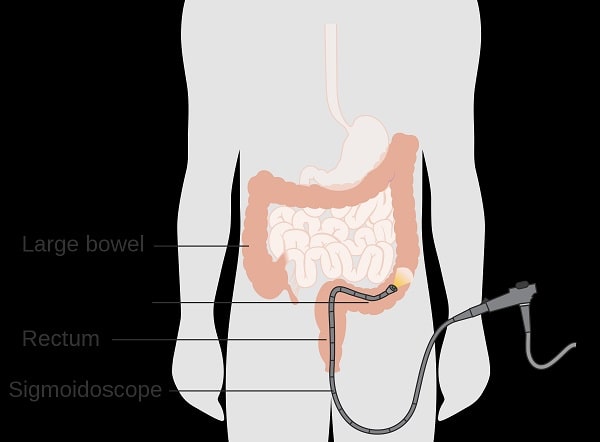In extreme cases of diarrhea, belly pain, constipation, polyps (abnormal growths), and bleeding, doctors advise having your large intestine checked using sigmoidoscopy. Sometimes, in other scans, it may appear that the root cause of the sickness or pain you’re feeling could be in the large intestine, so it becomes necessary for you to get a sigmoidoscopy.
Let’s talk about health conditions or symptoms when the doctors may suggest sigmoidoscopy. If you’re continuously struggling with constipation, and the medications don’t seem to give any significant results, then you should get your intestine and the sigmoid area checked. People are advised to get a sigmoidoscopy done on their intestine in the case of continuous loose motion and blood in the stool. Sometimes it happens when you have had other scans of your body, and to find the root cause of sickness, doctors advise checking the sigmoid area of the intestine with the endoscope. Another case where your doctor might refer you for a sigmoidoscopy is when you have constant pain in your stomach or lower belly, or once you take medicine for the pain, but the pain returns after a day or two.
And if you’re already familiar with the importance or significance of such a medical examination, then you must be wondering about how much it costs. right? Well, we’re here to help you out with that. Before the sigmoidoscopy, we'll go over the cost range and anything else you might be concerned about.

The cost of sigmoidoscopy can depend upon a few factors such as:
There are only two types of sigmoidoscopy, and both of them are different in terms of the type of endoscope being used in the procedure.
Basically, there are two types of sigmoidoscopy, one is by using a rigid endoscope, and the other one is by using a flexible endoscope. The one with the flexible and easy-to-operate endoscope is called "Flexible Sigmoidoscopy." This type of sigmoidoscopy doesn’t feel odd, and during the process, with a flexible endoscope, the examiner or doctor can ensure not to further damage any infection or anything like that. And the price of the procedure also depends upon the type of sigmoidoscopy you’re going with. Apparently, Flexible Sigmoidoscopy will cost you on the higher end as compared to the Rigid one.
If you’re worried about how this is going to feel, then don’t think about it too much because if you’re going with flexible sigmoidoscopy, you won’t feel any discomfort or pain during the check. Before the doctor/examiner even begins the process, they’ll give you the enema kit one day before the sigmoidoscopy to properly clear your intestine.
Once the intestine is completely clear and there’s no stool left in there, the examiner will insert the endoscope through the anus. You will be able to view the inside of your intestine because of the inbuilt camera of the endoscope. Some modern endoscopes come with functionalities to take out the polyp-like structures, and if there’s any sort of infection, then it can collect samples painlessly for biopsy. When taking samples of infection, or any other tumor-like structure, you won’t feel any pain, because there are no pain receptors inside of the intestine.
Q1. What Happens After A Successful Sigmoidoscopy Test?
Ans: Once the endoscope is withdrawn, the examiner or doctor will examine the outer colon area carefully, which only takes 5 to 10 minutes. After a sigmoidoscopy session, you may feel full or bloated in the abdominal area, which is completely normal, and it shouldn’t last long. And after the test is conducted successfully, the examiner or your doctor will share and explain the findings or results of the test. Based on the end report or results, you’ll be suggested or recommended the best possible treatment options as per your condition.
Q2. Are There Any Risks or Complications Involved During And After The Sigmoidoscopy?
Ans: Sigmoidoscopy is a very low-risk test, and there are rarely any complications or problems that occur during or after the test. However, in some very rare cases, or because of the lack of carefulness of the examiner, when taking samples for the biopsy, there could be bleeding issues on the biopsy site. If that happens, you should let your doctor know as soon as possible.
Q3. In What Cases The Colonoscopy Is Recommended After The Sigmoidoscopy Test?
Ans: Sometimes it happens that after the sigmoidoscopy, nothing concerning comes into the report, in that case, if you are still feeling pain and discomfort in your abdominal area. In that case, doctors or examiners may refer you for a colonoscopy to check for any abnormalities further in the colon area. But there’s a difference between colonoscopy and sigmoidoscopy. Take colonoscopy as a longer and more thorough version of sigmoidoscopy.